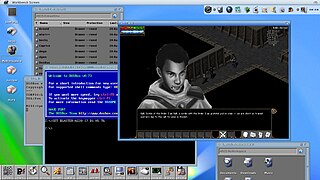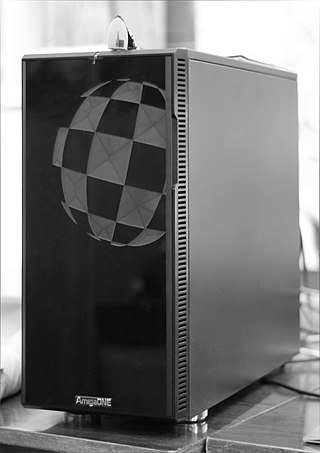The dispute
Four days after Amiga, Inc. announced the new Amiga OS4 (OS4) compatible machines, they sued Hyperion Entertainment (Hyperion). Amiga, Inc. stated that it decided to produce a PowerPC version of AmigaOS in 2001 and on November 3, 2001, they signed a contract with Hyperion (then a game developer for the 68k Amiga platform as well as Linux and Macintosh). Amiga, Inc. gave Hyperion access to the sources of the last Commodore version, AmigaOS 3.1, but access to the post-Commodore versions OS 3.5 and 3.9 had to be purchased from Haage & Partner, since they had developed them, but never returned the source code to Amiga, Inc.
Amiga, Inc. also said that its contract allowed Hyperion to use Amiga trademarks in the promotion of OS4 on Eyetech's AmigaOne and stipulated that Hyperion should make its best efforts to deliver OS 4 by March 1, 2002, a port of an elderly operating system (68k) for an entirely different processor architecture (PowerPC) in four months, an optimistic target that Hyperion failed to meet.
According to Amiga, Inc., the contract permits the purchase of the full sources of OS4 from Hyperion for US$25,000. The court filing says that Amiga, Inc. paid this sometime in April–May 2003, to keep Hyperion from going bankrupt, and that between then and November 21, 2006, Amiga, Inc. paid another $7,200, then $8,850 more which it says Hyperion said was owing.
Furthermore, in the filing, Amiga, Inc. President Bill McEwen revealed that Amiga, Inc. still hasn't received the sources for AmigaOS 4, that he's discovered that much of its development was outsourced to third-party contract developers and that it is not clear if Hyperion has all the rights to this external work. Eventually, after five years and $41,050, on 21 November 2006, Amiga, Inc. told Hyperion it had violated the contract and gave it 30 days to sort it out—to finish the product and hand over the sources. That did not happen, so the contract was terminated. [8] on 20 December 2006. Hyperion claims in its defense that Amiga, Inc. rendered the contract null through dealings with KMOS, a company which acquired the Amiga assets and renamed itself Amiga, Inc. over 2004–05. [9]
Four days later, on 24 December 2006, Hyperion released the final version of OS4 – although according to Amiga, Inc., Hyperion claims that this was merely an update of the developers' preview version of 16 April 2004. Since the contract ended, Hyperion had no rights to use the name AmigaOS or any Amiga intellectual property, or to market OS4 or enter into any agreements about it with anyone else. Nevertheless, AmigaOS 4 was still being developed [10] and distributed. Furthermore, ACube Systems released a series of Sam440ep motherboards, which run AmigaOS 4.
For a time, the case seemed deadlocked with neither side being apparently able to prove the point either way. Without Amiga, Inc.'s permission, Hyperion Entertainment could not use the AmigaOS name or related trademarks. Hyperion's defense centered around the potentially contract-voiding nature of the Amiga, Inc./KMOS handover, the problems they faced in acquiring the post-Commodore OS 3.x source code which Amiga, Inc. claimed to own and have access to, and the presence of new work and open components in the new operating system.










